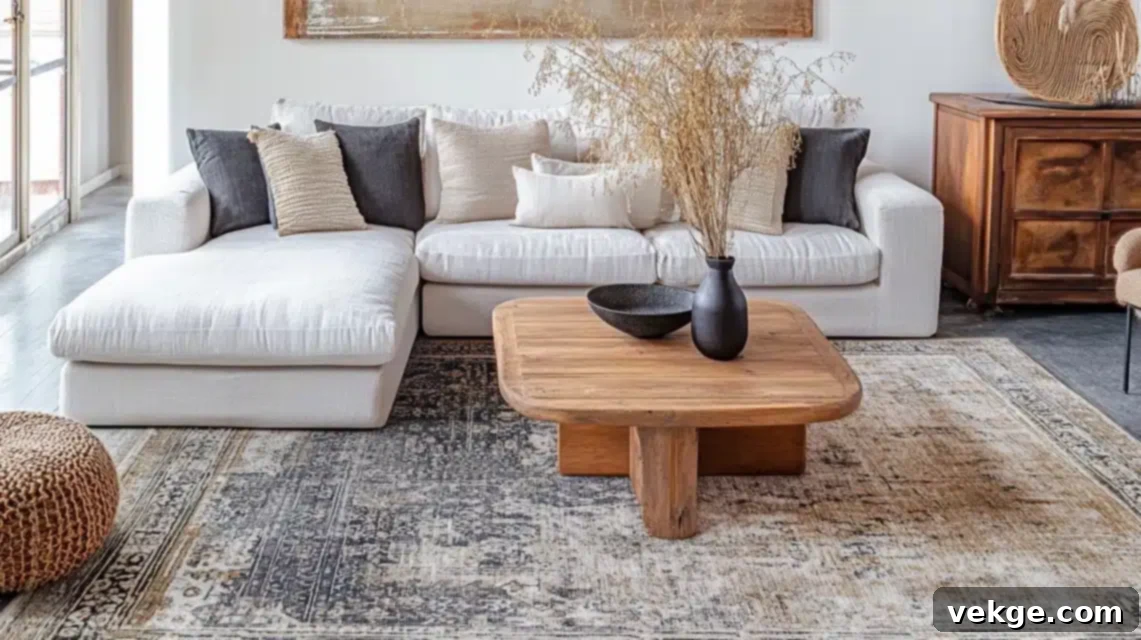Ultimate Guide to a Stylish & Functional Living Room: 28 Essential Items You Need
A beautifully designed living room is more than just a space; it’s the heart of your home, a sanctuary where comfort, functionality, and personal style intertwine. It’s the backdrop for cherished memories, from lively family gatherings to quiet evenings spent unwinding with loved ones. Whether you’re embarking on a brand-new decorating journey or simply looking to refresh your current space, selecting the right elements is paramount to achieving a harmonious and inviting atmosphere.
This comprehensive guide will walk you through 28 indispensable items that promise to transform an empty room into a warm, welcoming haven. Each carefully chosen element plays a pivotal role in crafting a space that not only caters to your unique lifestyle but also exudes a polished, cohesive, and utterly inviting charm. From the foundational pieces of furniture that anchor your design to the subtle decorative touches that express your personality, we’ll cover everything you need to create a living room that truly feels like home.
By focusing on these essential items, you’ll be able to build a living room that is both aesthetically pleasing and highly practical, ensuring every corner serves a purpose while contributing to an overall sense of comfort and style. Let’s dive into the ultimate checklist for crafting your dream living room!
Make sure you have these living room essentials for an inviting living room!
1. Sofa/Couch

The sofa is undoubtedly the cornerstone of your living room, setting the tone for both comfort and style. As the main seating, it dictates the flow and functionality of the entire space. When choosing a sofa, prioritize one that offers the right dimensions for your room and unparalleled comfort for everyday use. Consider factors like seat depth, back height, and arm style to match your lounging preferences. For homes with children or pets, opting for durable, easy-to-clean fabrics like microfiber, performance linen, or even leather can be a game-changer. A high-quality sofa is a significant investment, expected to last 5-10 years, so select a timeless style and a neutral color that won’t quickly feel outdated. Always look for robust construction, especially a frame made from kiln-dried hardwood, which ensures longevity and stability.
2. Coffee Table

More than just a surface, the coffee table serves as a central hub for your living room, combining functional utility with a significant style statement. Its height is crucial; ideally, it should be slightly lower than or level with your sofa’s seat cushions for ergonomic access to drinks and books. The shape should complement your seating arrangement: rectangular tables pair beautifully with traditional sofas, while round or oval tables soften the lines of sectionals and are safer in homes with small children. Material choice is key for maintenance and durability; while glass tops offer a sleek, airy feel, they require frequent cleaning, whereas wood, metal, or stone options provide more resilience and character. Consider hidden storage features for remotes or magazines to maintain a clutter-free environment.
3. End/Side Tables
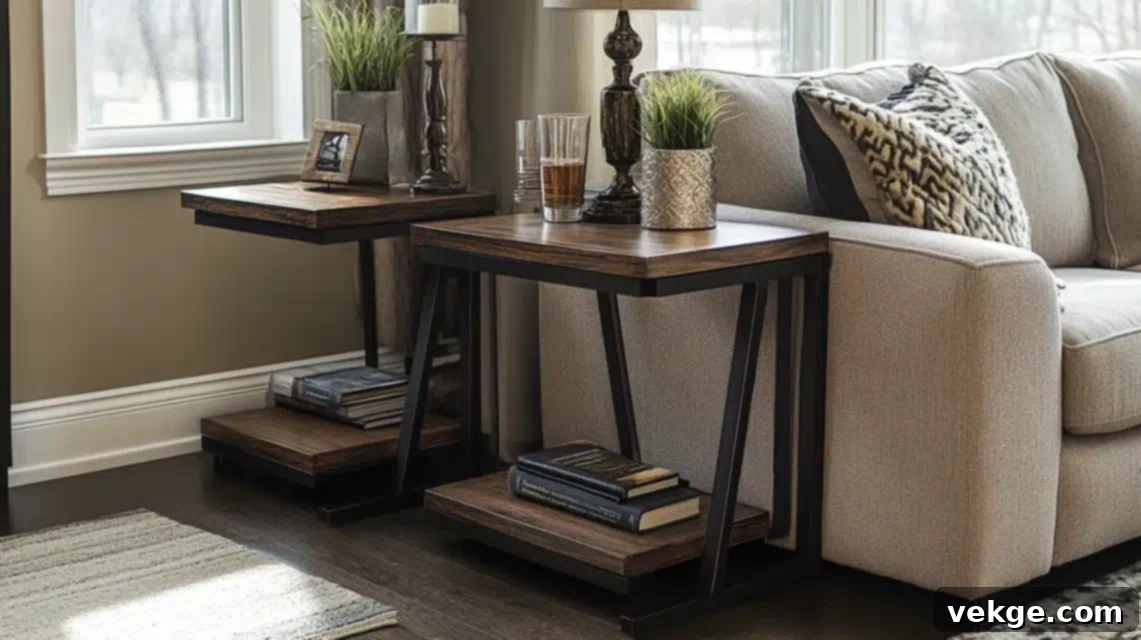
End or side tables are the unsung heroes of living room functionality, providing essential surfaces right where you need them. These smaller tables dramatically enhance the convenience of your seating areas, offering perfect spots for drinks, snacks, reading materials, and, most importantly, lamps. Position them within easy reach of every chair and sofa for maximum utility. Their height should ideally be close to the arm height of your sofa or accent chairs to ensure comfortable access. While they don’t need to be an exact match to your coffee table, they should harmoniously coordinate in terms of style, material, or finish to create a cohesive and well-put-together look. Consider adding one with a drawer or a lower shelf for extra storage or display.
4. TV
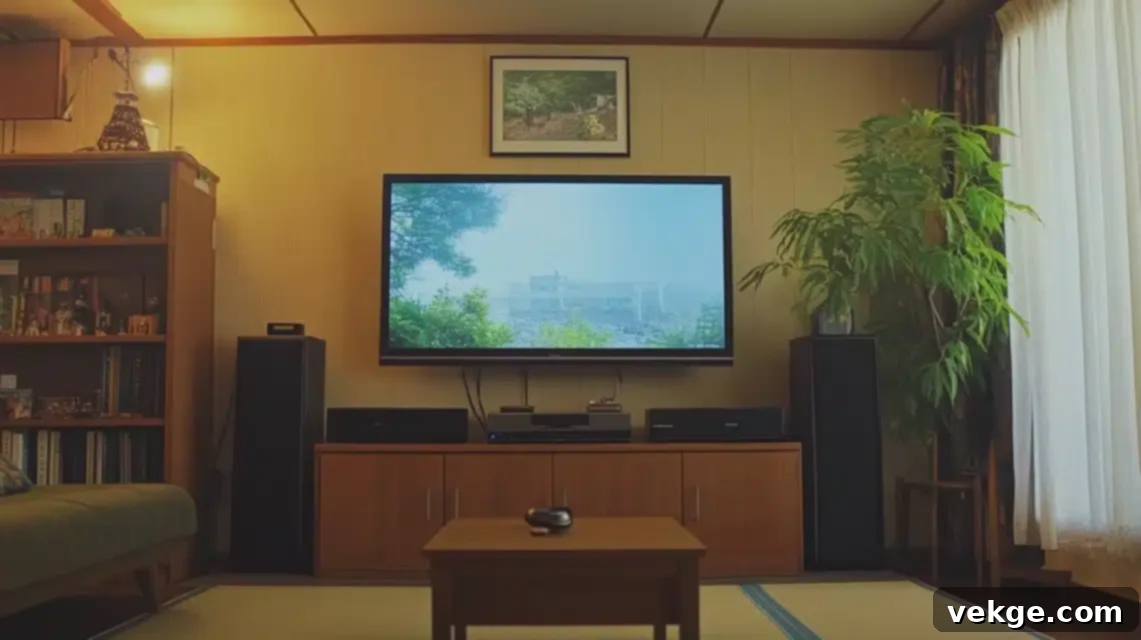
For many, the television is a central element in the living room, dictating furniture arrangement and viewing experience. When selecting a TV, consider the screen size relative to your room dimensions and typical viewing distance. A general rule of thumb is to measure the distance from your primary seating to the TV’s intended location in inches, then divide by 2 to determine a comfortable screen size. For instance, if you sit 10 feet (120 inches) away, a 60-inch TV might be ideal. Proper mount height is equally important for comfortable viewing; the center of the screen should ideally be at eye level when you are seated. Modern smart TVs offer features that can enhance both entertainment and connectivity, making them a crucial part of a contemporary living space.
5. Media Console
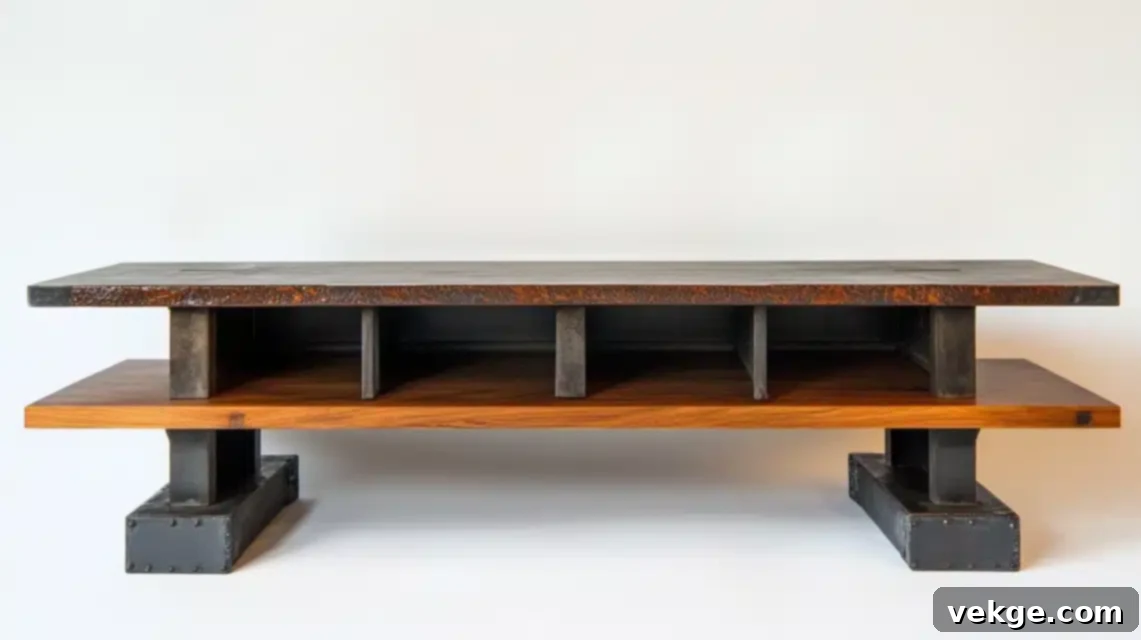
A media console is essential for anchoring your television and housing all its components while expertly concealing unsightly cords and cables. It’s crucial to size it appropriately for your TV; the console should always be wider than your screen to ensure stability and a balanced aesthetic. If you plan to store electronic components like gaming systems or media players, look for designs with adequate ventilation to prevent overheating. Storage options such as drawers, shelves, or cabinets are invaluable for organizing remotes, games, movies, and other media accessories, contributing to a tidy and organized living room. Many modern consoles also feature built-in cable management solutions, making it easier to maintain a clean, streamlined look.
6. Accent Chairs
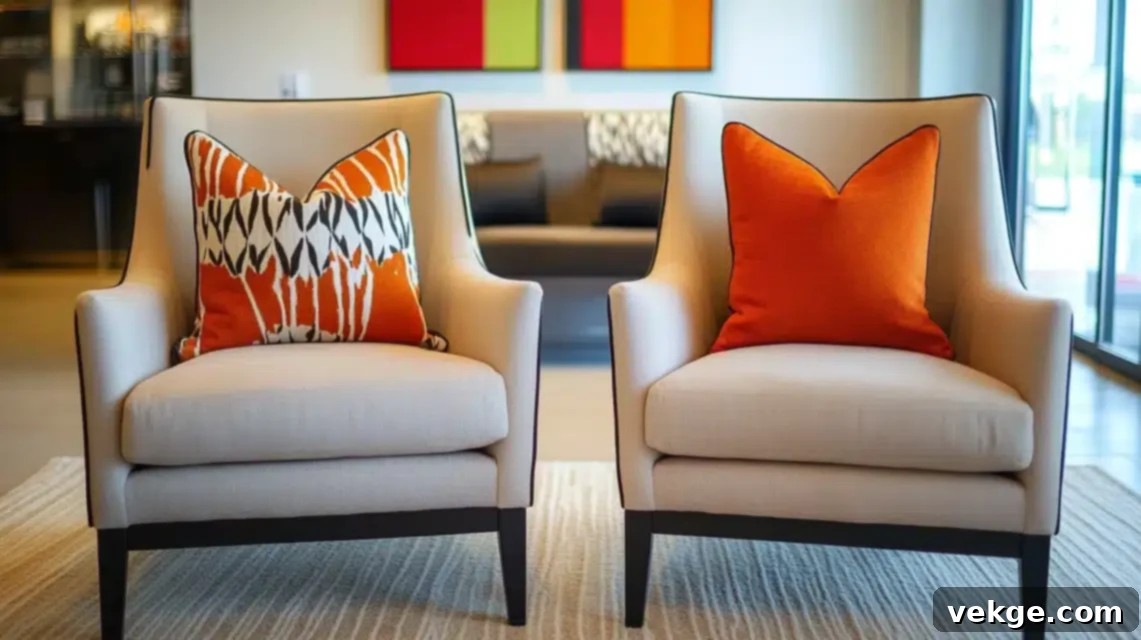
Accent chairs offer flexible additional seating while providing a wonderful opportunity to introduce visual interest, color, and texture into your living room. Choose chairs that harmonize with your overall design aesthetic but don’t necessarily match your main sofa exactly; this creates a more curated and dynamic look. Pay close attention to scale, ensuring the chairs are neither too large nor too small relative to your other furniture to maintain balance. Position them strategically to create inviting conversation areas, allowing guests to face each other comfortably. Swivel chairs are particularly versatile, offering the flexibility to pivot between TV viewing and engaging in conversation, making them a smart choice for adaptable living spaces.
7. Floor Lamp
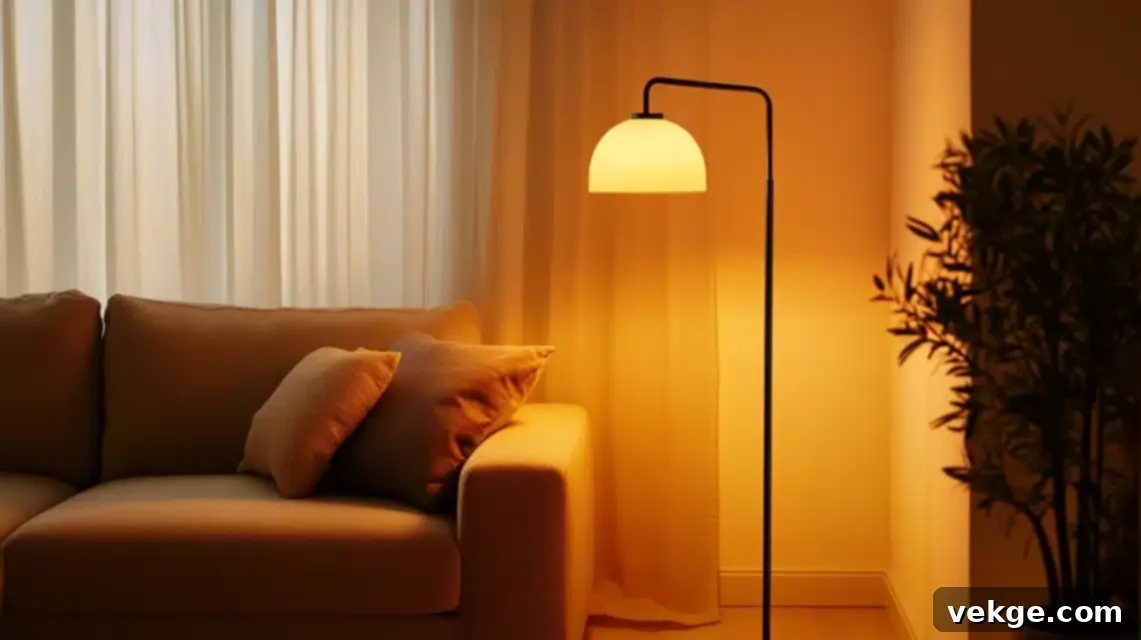
Floor lamps are indispensable for creating layers of lighting in your living room, offering both practical task lighting for activities like reading and ambient light to establish a specific mood. Strategically place them near seating areas where extra illumination is needed, such as beside a sofa or accent chair. When selecting a floor lamp, look for adjustable options—like an arc lamp or one with a flexible neck—to direct light precisely where it’s most beneficial. The ideal height should allow light to fall over your shoulder when seated, preventing glare and shadows. Consider models with dimming features, which provide fantastic flexibility in adjusting lighting levels to suit different times of day or various activities, enhancing the room’s versatility and ambiance.
8. Table Lamps
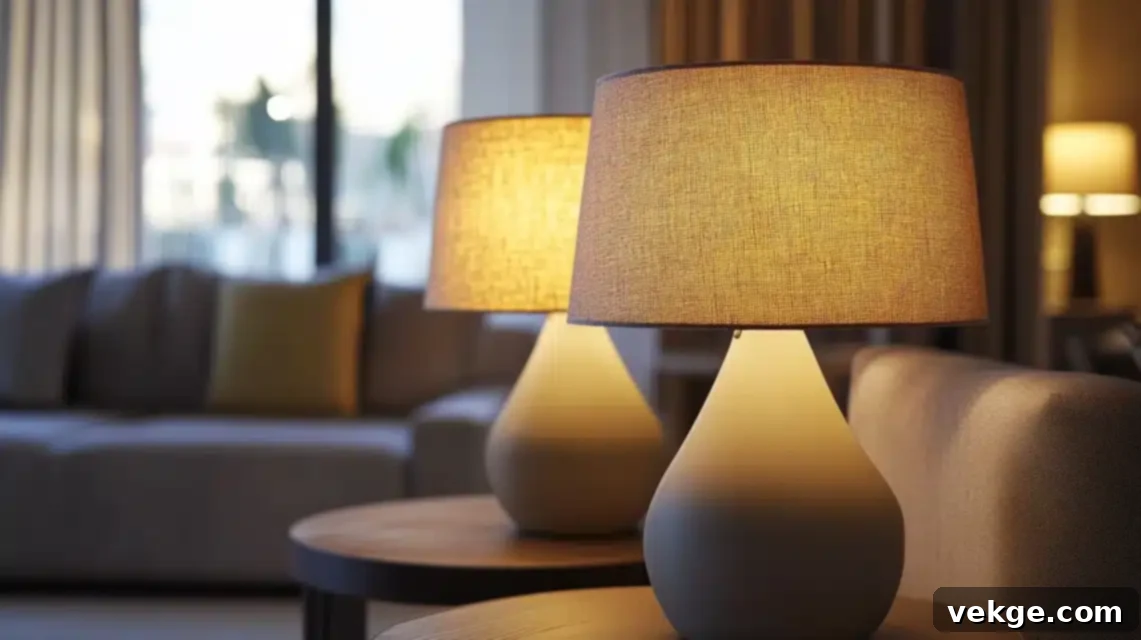
Table lamps are crucial for adding another layer of soft, inviting light to your living room, acting as both functional illuminators and striking decorative elements. Place them thoughtfully on end tables, consoles, or bookshelves to distribute balanced light throughout the room and eliminate dark corners. For optimal light distribution and to avoid harsh glare, the bottom edge of the lampshade should ideally be at eye level when you are seated. It’s important to choose sizes that are proportional to their respective tables; a general guideline is that the total lamp height (from base to finial) should be approximately 1.5 times the height of the table it sits on. Coordinating the lamp bases and shades with your overall decor can elevate the room’s aesthetic significantly.
9. Area Rug
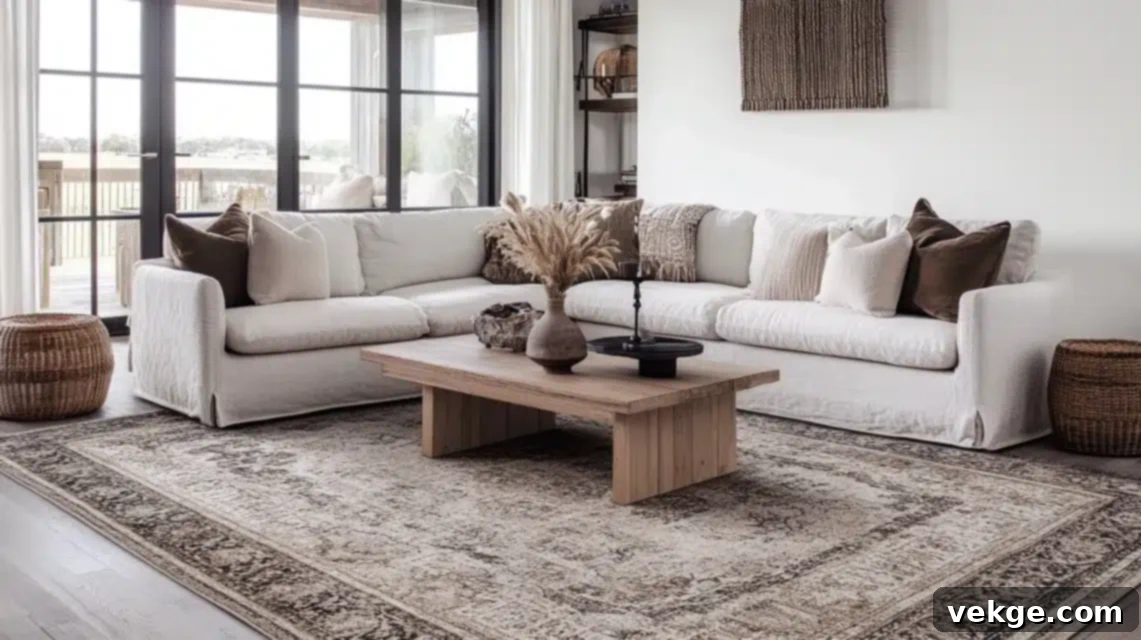
An area rug is a transformative element in any living room, serving to define a distinct seating zone, add warmth underfoot, and introduce color, pattern, or texture. Proper sizing is paramount for a cohesive look: all main furniture pieces (like sofas and accent chairs) should either have all their legs on the rug or at least their front two legs on it. In larger rooms, aim to leave 12-18 inches of exposed floor around the rug’s perimeter. The rug should also extend at least 6-8 inches beyond the sides of your sofa to truly anchor the space. When selecting materials and colors, consider the room’s traffic patterns; durable, easy-to-clean options are best for high-traffic areas. A well-chosen rug can instantly elevate the room’s design and comfort.
10. Curtains/Drapes
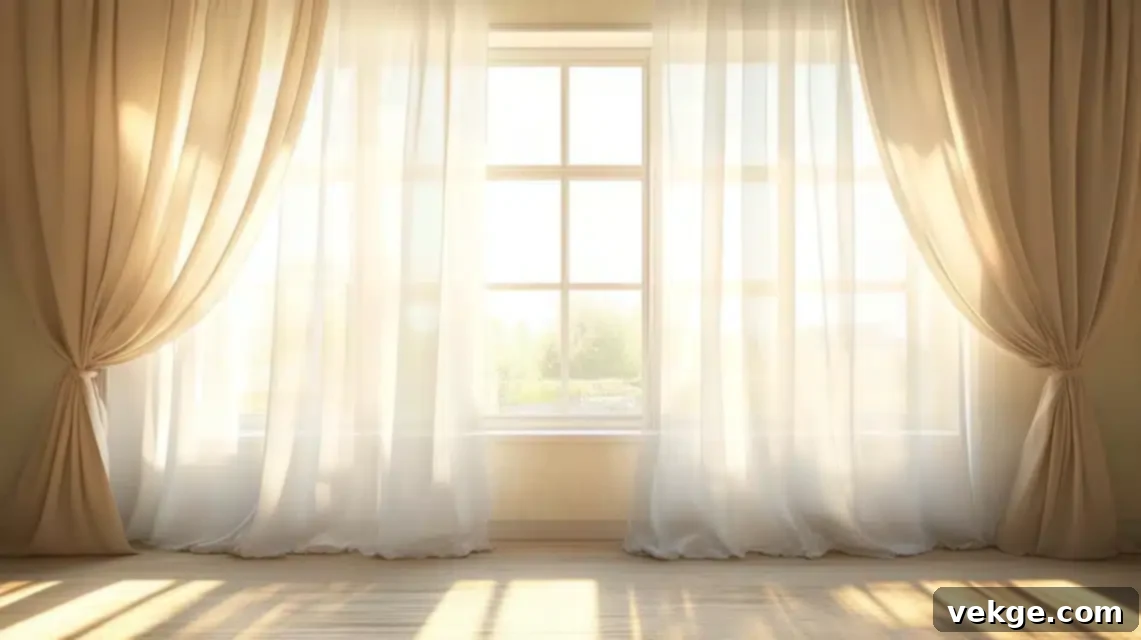
Curtains or drapes are much more than mere window coverings; they are essential for providing privacy, controlling natural light, and adding a crucial layer of visual softness and texture to your living room. To make windows appear larger and maximize the inflow of natural light, always hang your curtain rods high and wide—ideally 4-6 inches above the window frame and extending 6-12 inches beyond the frame on each side. The hem of the curtains should either gently kiss the floor or have a slight “break” of an inch or two for a luxurious pooled effect. For ultimate light control and increased insulation, consider layering sheer panels underneath heavier drapes, allowing you to easily adjust for desired light and privacy throughout the day.
11. Artwork/Wall Decor
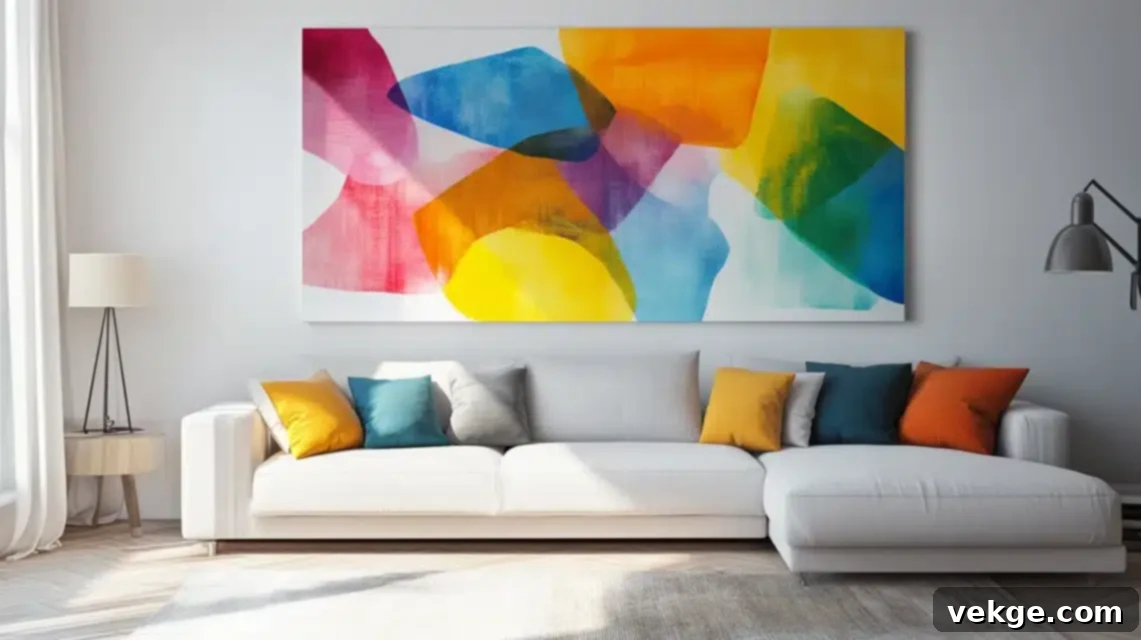
Artwork and wall decor are vital for infusing your living room with personality and adding compelling visual interest to otherwise blank walls. When hanging art, a good rule of thumb is to place the center of the piece at eye level when standing, which is typically about 57-60 inches from the floor. Scale is key: a single large piece should ideally take up about two-thirds to three-quarters of the wall’s width above a sofa or console. For smaller pieces, group them together to create a gallery wall or a cohesive arrangement that makes a stronger impact. Don’t shy away from mixing different mediums, such as paintings, prints, mirrors, or sculptural elements, to add depth and a more curated feel to your display. This personalization truly makes a house feel like a home.
12. Throw Pillows

Throw pillows are fantastic for instantly injecting comfort, color, and style into your living room seating, and they offer an easy way to refresh your decor seasonally. For a visually appealing and natural arrangement, aim to use odd numbers of pillows (e.g., three on a sofa, one on an accent chair). Mix various patterns while maintaining a consistent color theme to ensure cohesion without being matchy-matchy. Incorporate pillows of different sizes and shapes, such as squares, lumbar, or round, to add depth and visual interest. Always choose covers that are removable for easy cleaning, especially in active households. A general guideline is two to three pillows per sofa seat, striking a balance between comfort and decorative appeal without overcrowding.
13. Throw Blankets
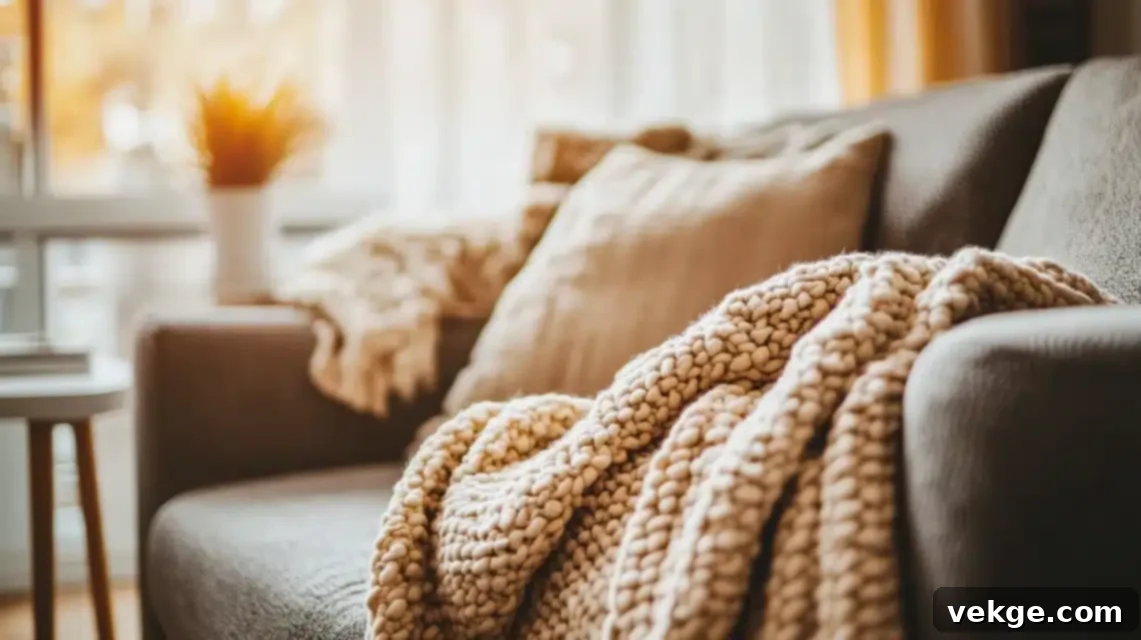
Throw blankets are the epitome of cozy living, offering both functional warmth and a wonderful opportunity to add texture, color, and a lived-in feel to your living room. Casually drape them over the armrests or backs of sofas and accent chairs to create an inviting, relaxed look. Select materials based on your climate and the season; think chunky knits for winter and light cotton or linen for warmer months. Having a few extra blankets neatly folded or tucked into a stylish basket ensures your guests also feel comfortable and cared for. Choose colors and textures that complement your existing textiles, creating a harmonious yet visually rich environment. A soft throw is perfect for snuggling up on a chilly evening.
14. Plants/Greenery
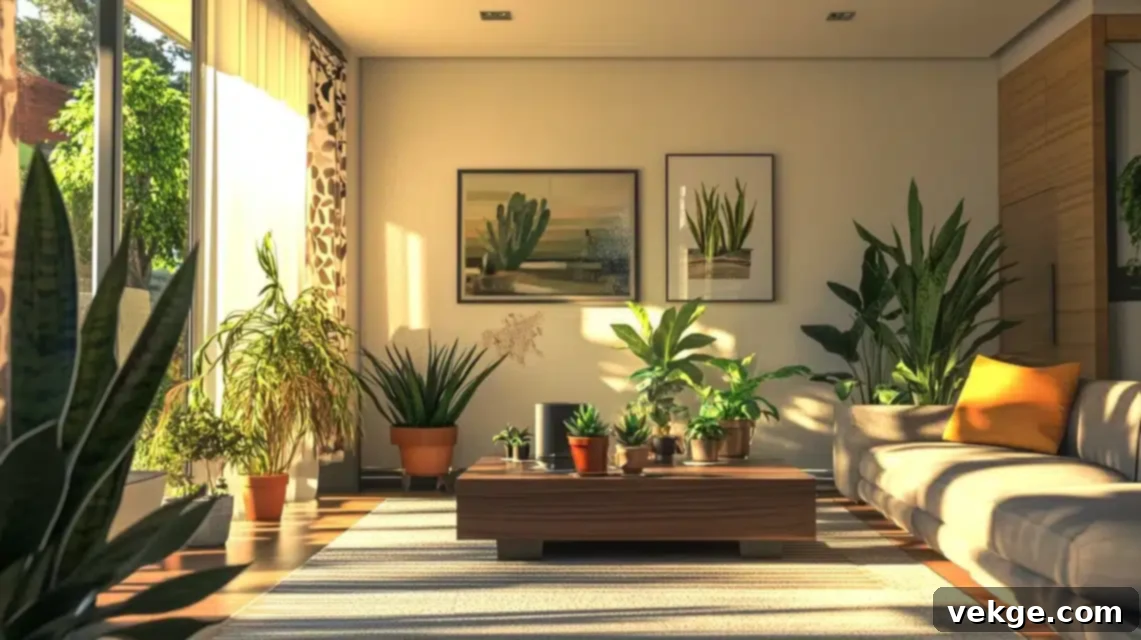
Bringing plants and greenery into your living room is one of the quickest ways to infuse life, freshness, and a calming natural aesthetic into your space. Beyond their beauty, many houseplants also help to purify the air. When choosing plants, select varieties that are well-suited to your room’s specific light levels—some thrive in bright, direct sun, while others prefer shade. Mix plant sizes and heights, from tall fiddle-leaf figs to smaller succulents, to create dynamic visual interest. Use attractive containers that complement your decor style, whether ceramic, terracotta, or woven baskets. For those new to plant care, low-maintenance options like snake plants, ZZ plants, or pothos are excellent starting points. Grouping plants in odd numbers often creates a more natural and pleasing arrangement.
15. Candles
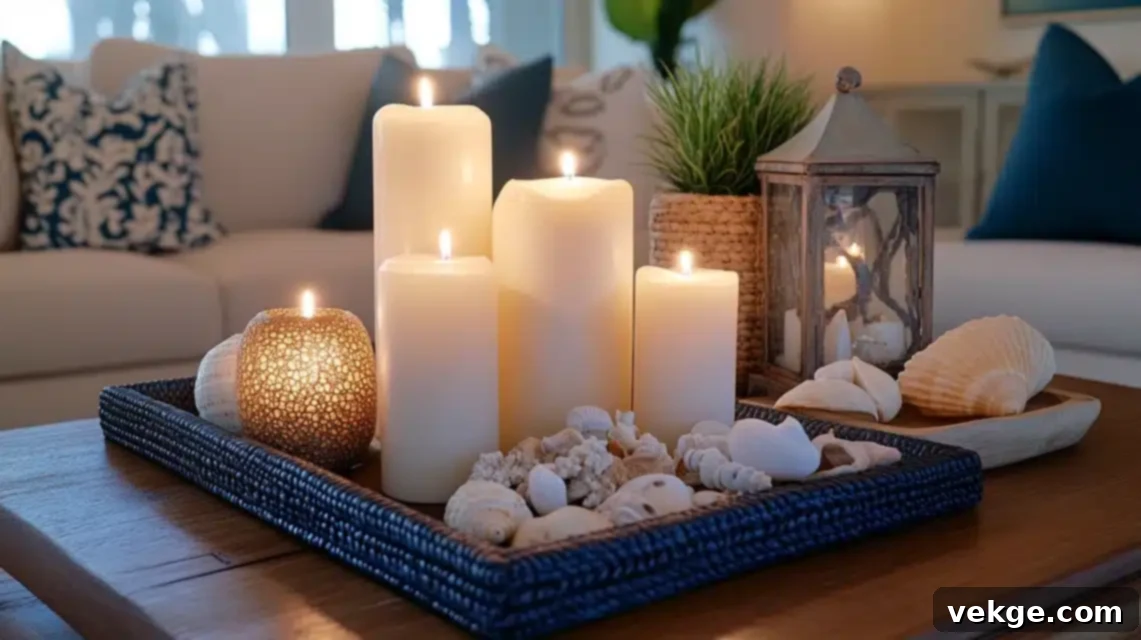
Candles are masterful at creating an instant atmosphere and infusing your living room with subtle, delightful fragrances. Grouping candles of varying heights and sizes together on a tray or coffee table creates a sophisticated and visually engaging vignette. For homes with children or pets, flameless LED candles offer a safe and worry-free alternative, mimicking the warm glow without the open flame. Always place candles on protective trays or dishes to safeguard your surfaces from wax drips and heat. Consider rotating seasonal scents—like pumpkin spice for autumn or fresh linen for spring—to subtly refresh your space throughout the year. When displaying multiple candles, using unscented options for some can prevent clashing fragrances, allowing individual scents to shine without overwhelming the room.
16. Personal Photos
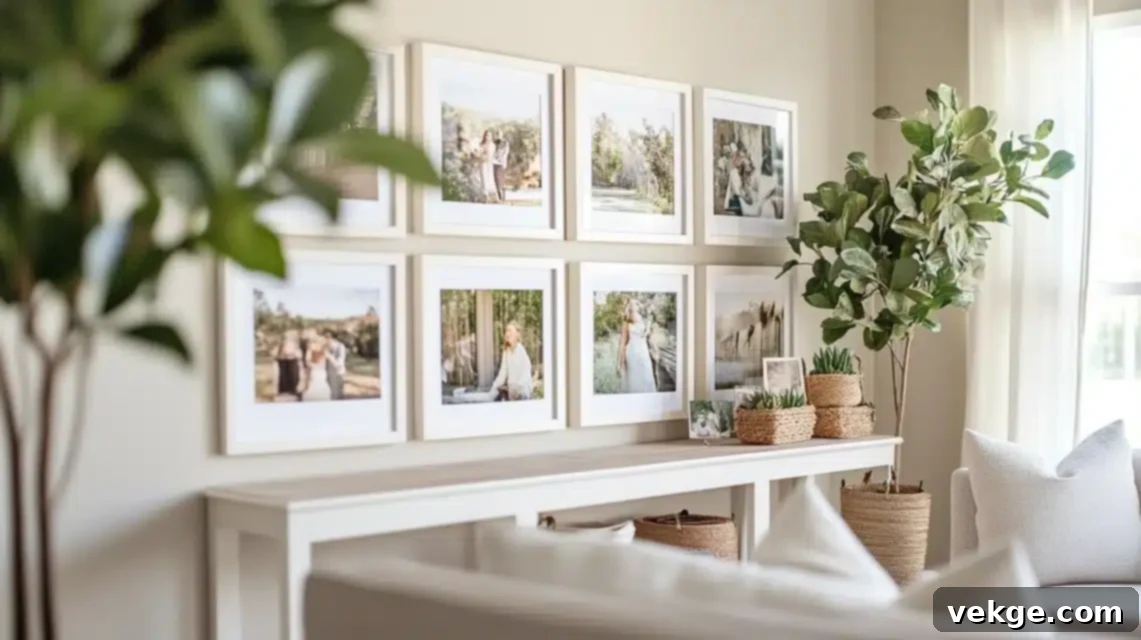
Nothing makes a house feel more like a home than displaying carefully selected personal photos. These cherished memories instantly infuse your living room with warmth, character, and a sense of belonging. For a polished and pulled-together look, display photos in coordinated frames—this could mean matching colors, materials (like wood or metal), or styles. Mix different photo sizes while maintaining a common element in the frames for visual harmony. When possible, arrange photos at eye level for easy viewing, whether on a console table or as part of a gallery wall. Instead of scattering single frames, consider creating small, impactful groupings that tell a story. Regularly updating your photos keeps your displays fresh and relevant, reflecting current family moments and adventures.
17. Baskets
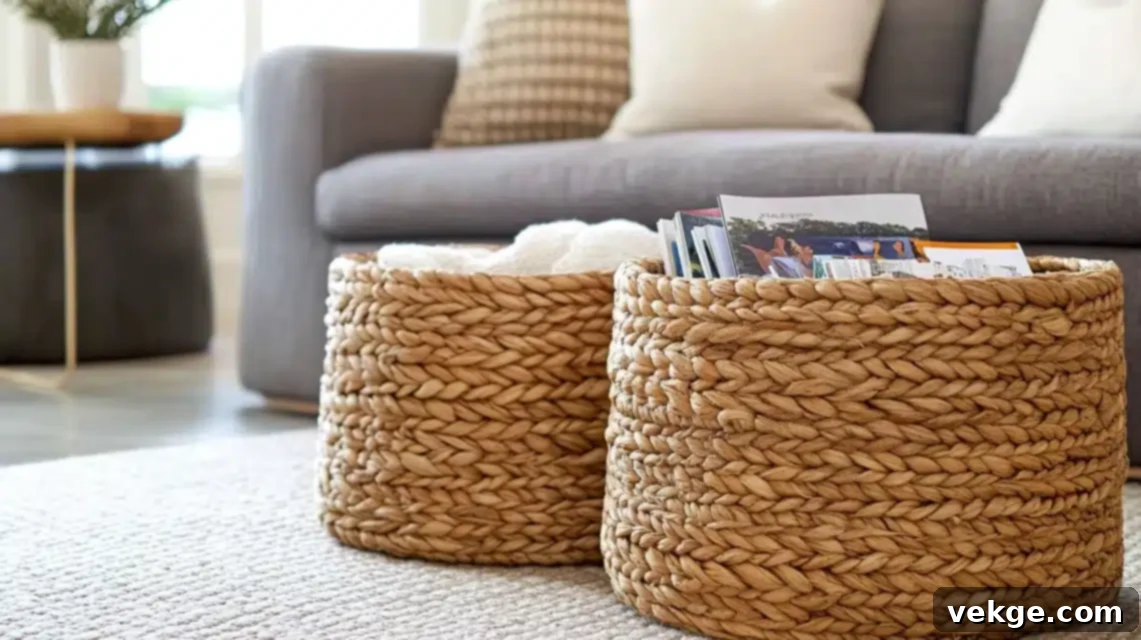
Baskets are incredibly versatile and practical items that help keep your living room organized while simultaneously adding beautiful natural texture and warmth. Utilize larger baskets for storing bulkier items like extra throw blankets, pillows, or even children’s toys, keeping them neatly out of sight. Smaller baskets are perfect for corralling everyday clutter such as remotes, magazines, or charging cables on coffee tables or shelves. Experiment with mixing various materials and weaves—like woven rattan, seagrass, wire, or felt—to add depth and visual interest to your storage solutions. Place them strategically near seating areas for easy access and functionality. Always choose sizes appropriate for their intended contents, ensuring they can handle daily use without compromising their sturdy construction and aesthetic appeal.
18. Light Fixtures
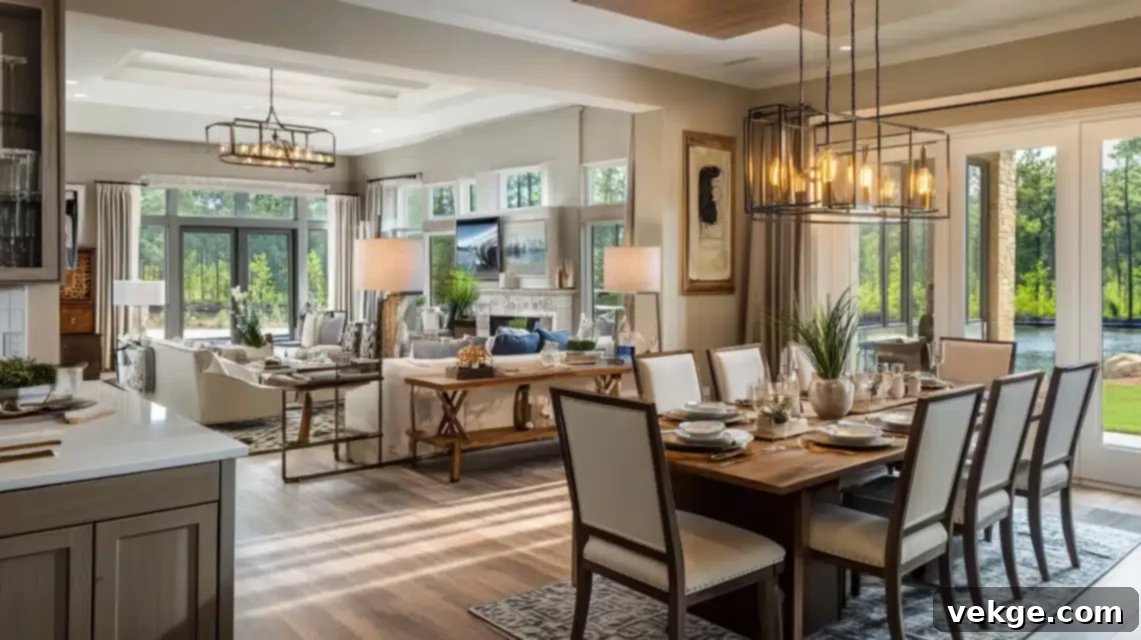
Effective lighting design is crucial for a comfortable and functional living room, and this is best achieved by creating layers of light with a thoughtful mix of fixtures. Start with overhead lighting, such as a pendant or recessed lights, for general illumination that brightens the entire room. Supplement this with task lighting from floor lamps and table lamps, strategically placed near reading nooks or seating areas. Accent lighting, like picture lights or strip lights, can highlight artwork or architectural features. Installing dimmer switches on all your fixtures offers immense flexibility, allowing you to easily adjust the brightness and mood. Space fixtures evenly to avoid dark spots and choose styles that complement your room’s overall design and other metal finishes. Also, consider the bulb temperature (warm vs. cool) to achieve the desired ambiance.
19. Small Accent Pieces

Small accent pieces are the finishing touches that truly infuse your living room with personality and polish. These carefully chosen accessories allow you to express your unique style and tell your story. For maximum visual impact, include items of varied heights, textures, and materials when arranging them. Grouping items in odd numbers, such as a collection of three vases or five decorative objects, often creates a more dynamic and aesthetically pleasing display. Utilize decorative trays to elegantly corral smaller items on coffee tables or shelves, preventing clutter and creating a sense of organization. Select pieces that resonate with your interests, travels, or cherished memories. Rotating these decorative items seasonally or simply when you desire a change can keep your space feeling fresh, updated, and continually inspiring.
20. Loveseat
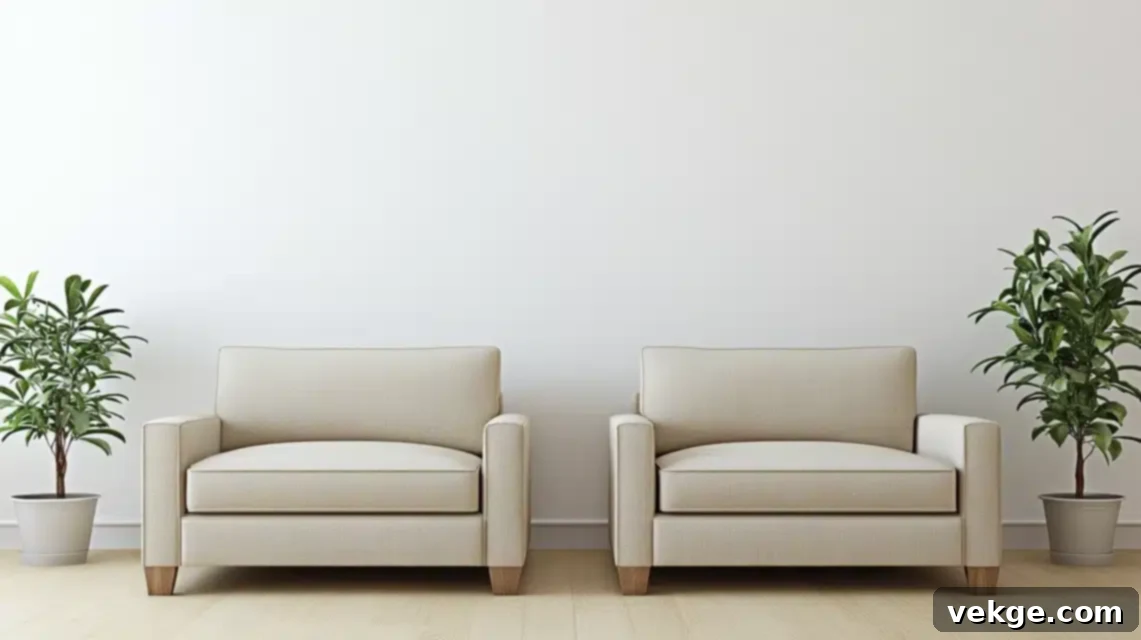
A loveseat is an excellent addition for smaller living rooms where a full-sized sofa might be too imposing, or as a complementary seating option in larger spaces. These two-seater sofas provide intimate seating perfect for couples or individuals. When selecting a loveseat, choose a style that harmonizes with your main sofa without being an exact match, which creates a more layered and intentional design. The size should always be proportional to your other furniture and the overall room dimensions, ensuring it doesn’t overwhelm the space. Pay attention to its placement to maintain clear traffic flow throughout the room. Just like with your main sofa, prioritize quality construction for a loveseat to ensure consistent durability and comfort over time.
21. Sectional
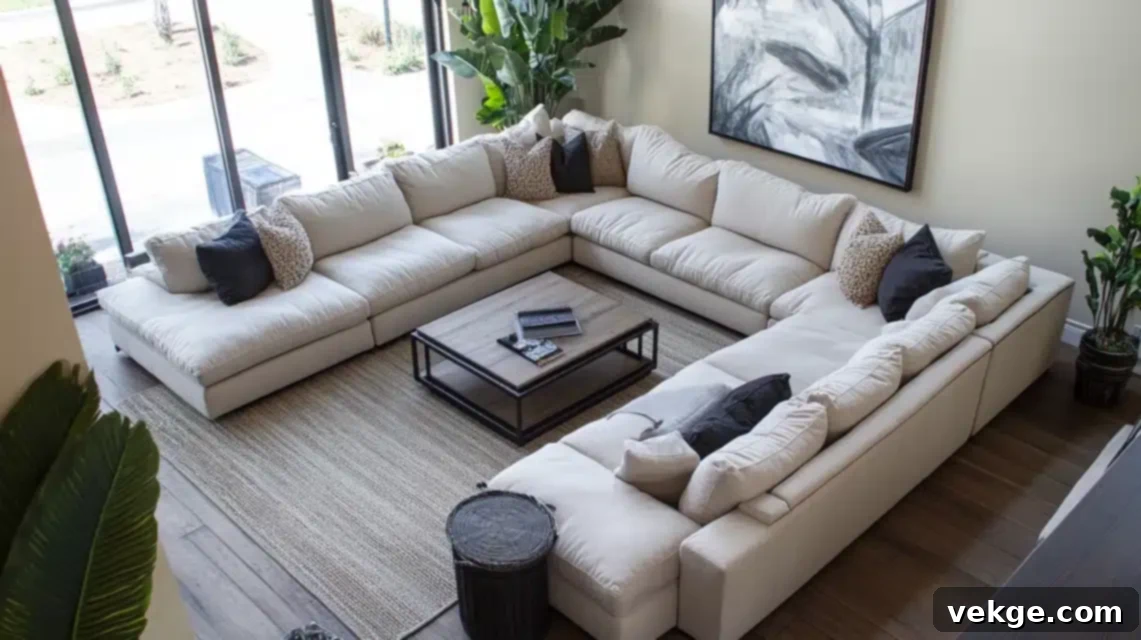
Sectional sofas are the ultimate solution for maximizing seating in larger living rooms, providing ample space for family and guests to lounge comfortably. Their modular design often offers flexibility in arrangement, allowing you to configure the pieces to perfectly fit your room’s layout and accommodate various traffic patterns. Common configurations include L-shaped, U-shaped, or even reclining sections. When choosing a sectional, ensure the size allows for comfortable movement around the room without feeling cramped. Look for features like cushions with removable covers, which make cleaning spills and maintaining freshness significantly easier. A well-chosen sectional can become the central gathering spot in your living room, offering unparalleled comfort and versatile seating.
22. Chaise
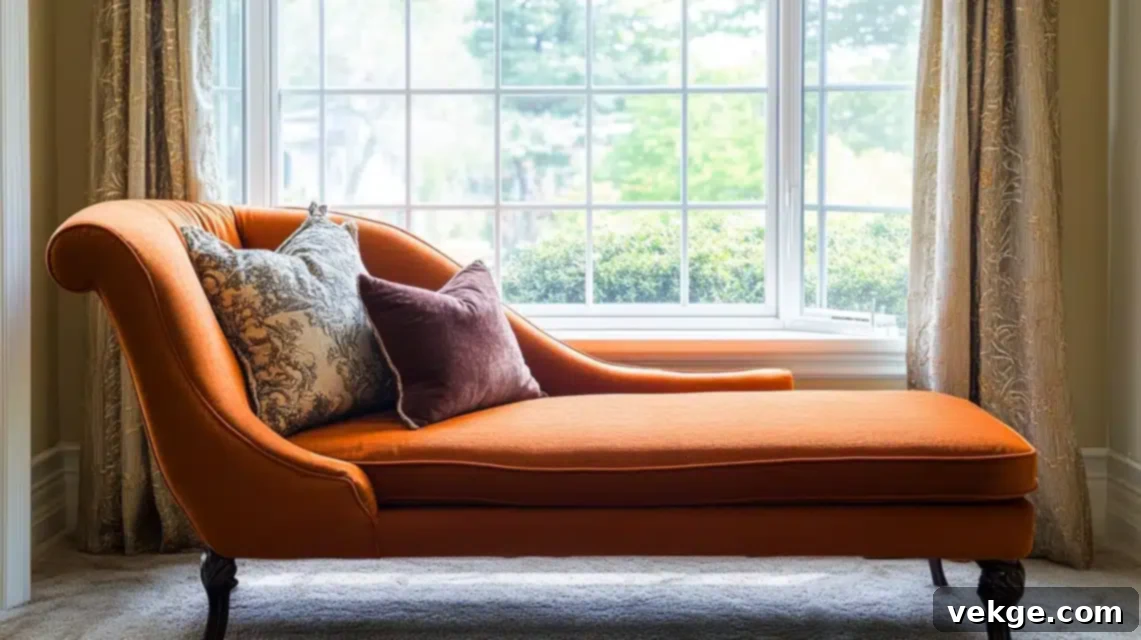
A chaise lounge offers a luxurious and comfortable spot specifically designed for extended lounging and relaxation. It can create a designated cozy reading nook when placed near a window or fireplace. When integrating a chaise into your living room, choose upholstery that either matches or beautifully coordinates with your other seating pieces for a cohesive look. Some chaises even come with built-in storage underneath the seat, offering a practical solution for stashing blankets or magazines. Ensure the size of the chaise allows for comfortable traffic flow around it, without obstructing pathways. Look for sturdy construction that supports various sitting and reclining positions, making it a perfect retreat for unwinding after a long day.
23. Bench
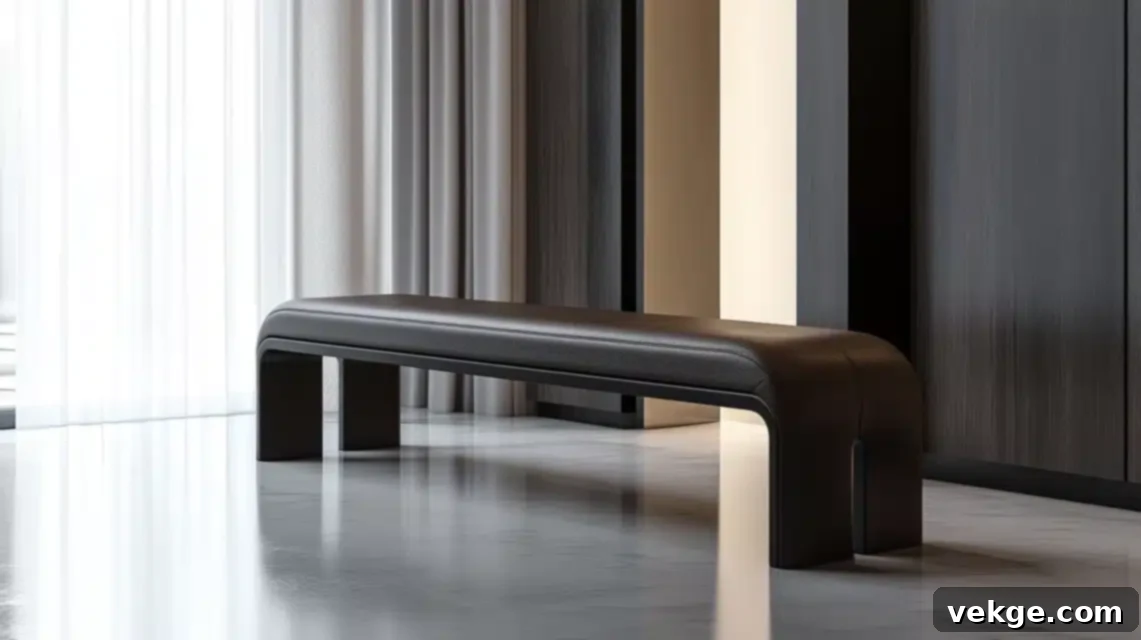
Benches are incredibly versatile pieces that offer flexible seating options and a strong style statement in a living room. They can be strategically placed behind sofas to create a console-like surface, under windows to provide extra seating with a view, or even at the foot of an armchair for a footrest. Look for heights that align well with your other furniture, ensuring they integrate seamlessly into your existing arrangement. Choose materials like upholstered fabric, wood, or metal that complement your overall design aesthetic. Many benches come with built-in storage, making them a dual-purpose asset for tidiness. Always ensure the length of the bench is proportional to its intended placement location, providing balance and functionality.
24. Dog Bed
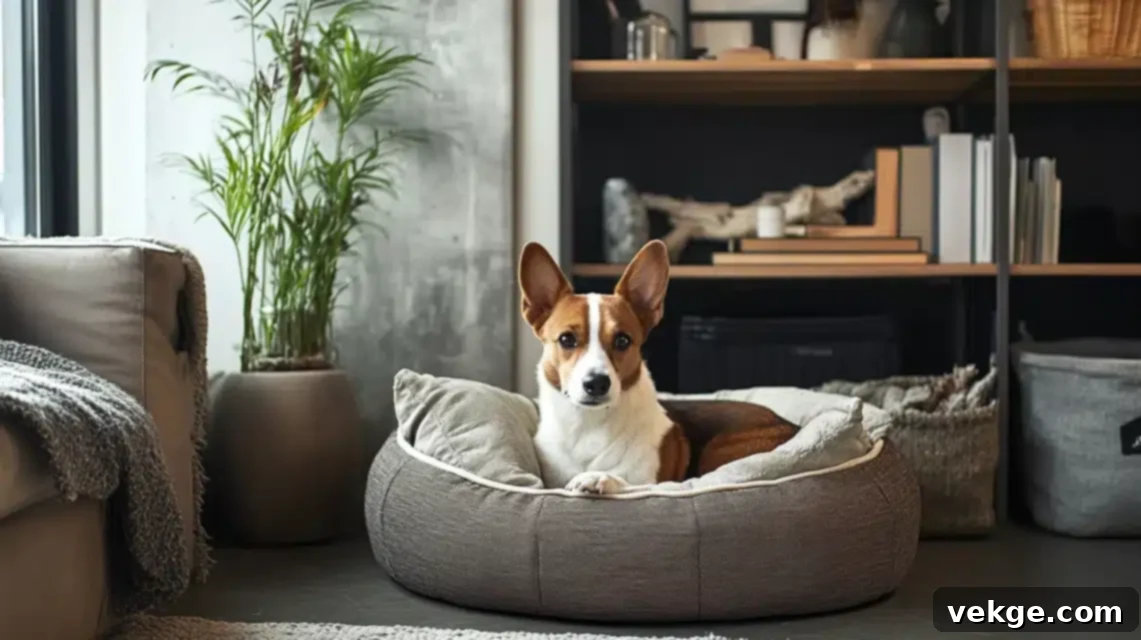
For pet owners, a dedicated dog bed is an essential living room item that gives your furry friends their own comfortable space while also blending seamlessly with your home decor. Choose materials that are easy to clean, such as washable covers, to keep your living room fresh and hygienic. Place the dog bed in a spot where your pet can feel part of the family activities but also have a defined retreat, perhaps near a sofa or a quiet corner. Consider raised beds for older pets or those with joint issues, as they offer better support. Select a size that is appropriate for your pet’s adult size, allowing them to stretch out comfortably. Many stylish options are available, from memory foam to orthopedic designs, ensuring your pet’s comfort is as prioritized as your own.
25. Ottoman
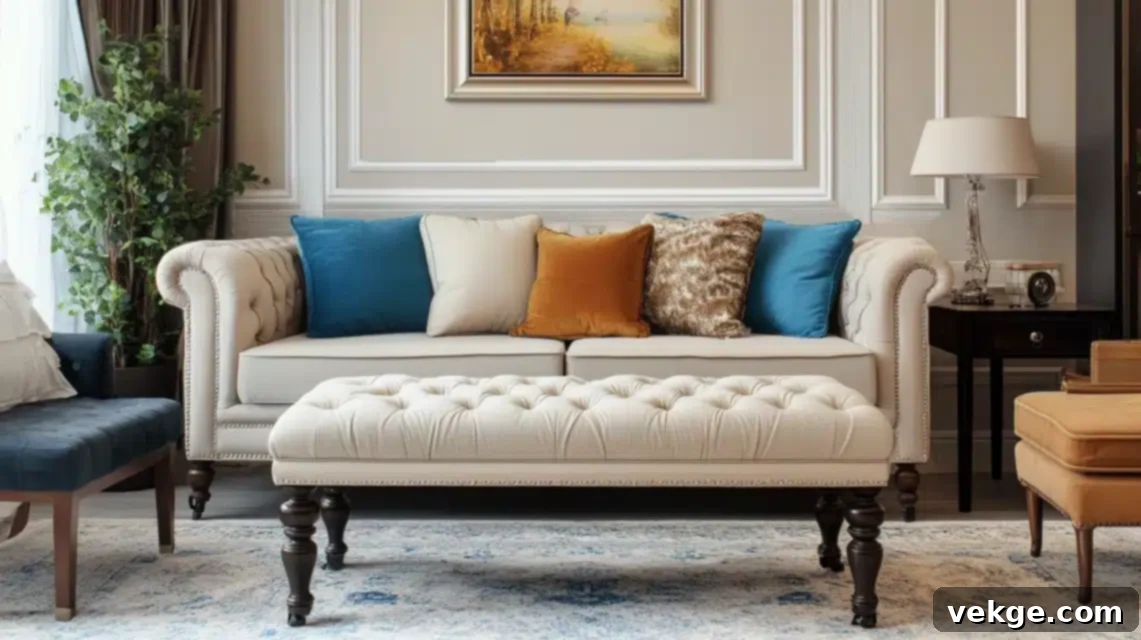
Ottomans are remarkably versatile pieces of furniture, serving multiple functions in a living room, from a comfortable footrest to extra seating or even an impromptu coffee table with the addition of a tray. Many ottomans come with hidden storage inside, making them invaluable for stashing extra blankets, board games, or remotes, helping to maintain a clutter-free environment. Ensure its height works well with your existing seating, allowing it to function effectively as a footrest without being too high or too low. Choose sturdy materials and construction that can withstand both feet and serving trays. Look for styles, fabrics, and colors that complement your other furniture, adding an extra layer of visual interest and functionality to your space.
26. Bookshelf
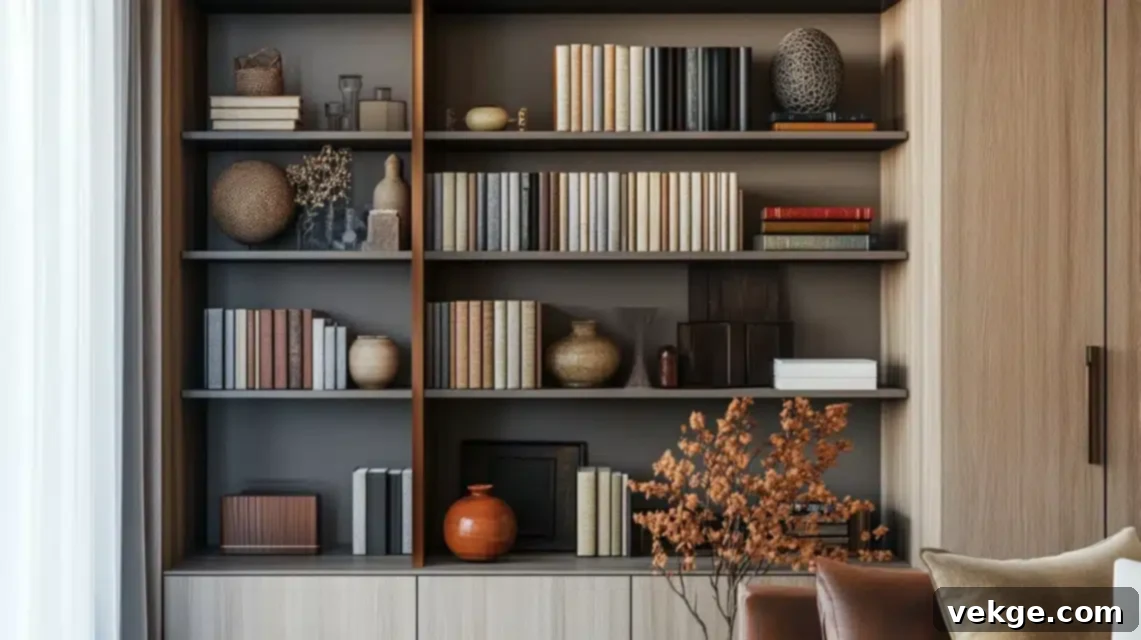
A bookshelf is a wonderful addition for both displaying your literary collection and showcasing cherished treasures, all while providing essential vertical storage. Consider a unit that combines both open and closed storage options; open shelves are perfect for decorative items and frequently accessed books, while closed cabinets can hide less aesthetically pleasing items. When arranging items, aim for visual balance by incorporating varying heights and depths. Don’t feel the need to fill every shelf; leaving some open space allows for visual rest and prevents a cluttered look. Mix horizontal stacks of books with vertical arrangements, perhaps using stylish bookends, for a more dynamic and curated appearance. A well-styled bookshelf adds character and intellectual charm to any living room.
27. Credenza
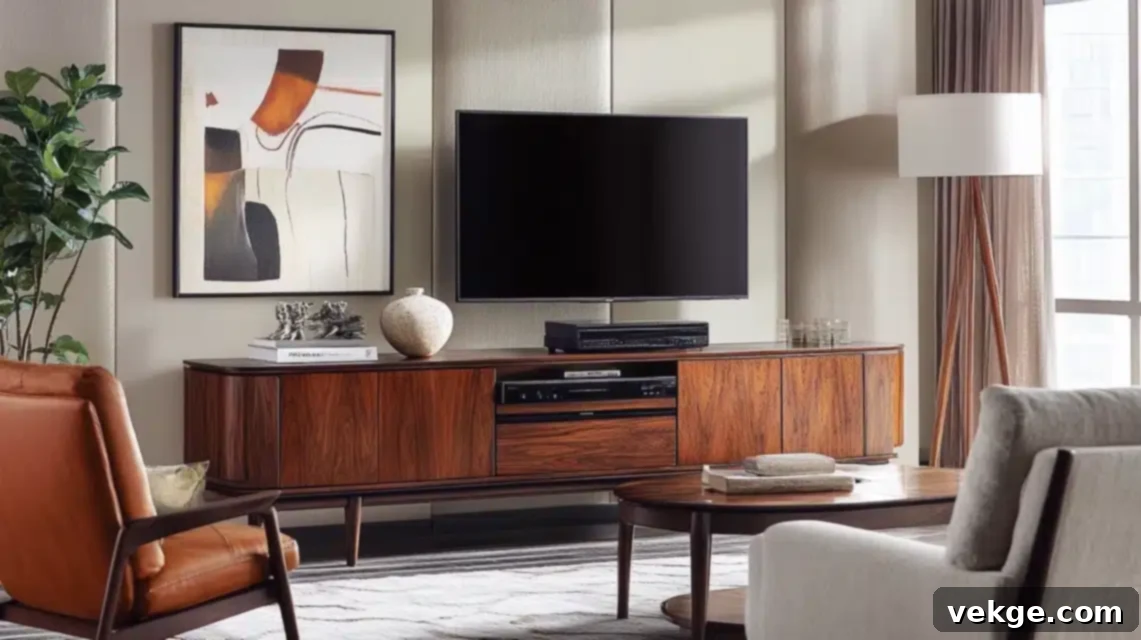
A credenza is a sophisticated and highly functional furniture piece that offers ample storage while simultaneously providing a generous display surface. Its typically lower profile makes it ideal for placing under a wall-mounted TV or as a stylish console behind a sofa. When selecting a credenza, choose a height that complements your space and other furniture. Look for features like adjustable shelving inside, which allows for versatile storage of different-sized items, from dishes to media components. If you plan to use it for media, ensure it has discreet cable management cutouts. Select hardware that coordinates with other metal finishes in the room for a cohesive look. Also, ensure the depth of the credenza works well with your room’s traffic patterns, allowing comfortable movement without obstruction.
28. Hutch
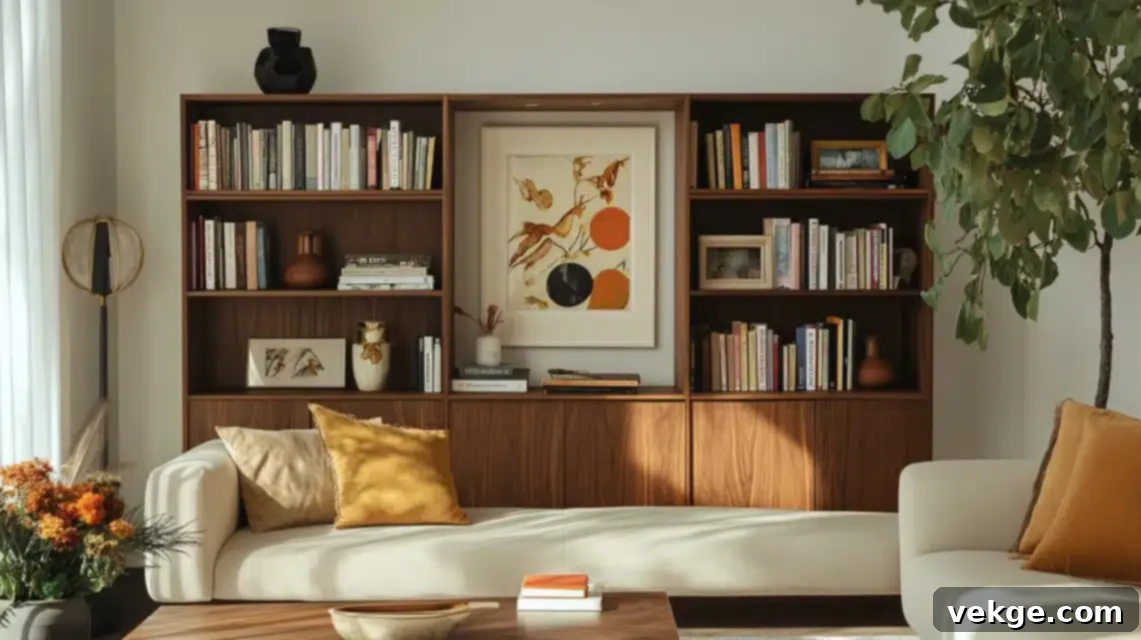
A hutch is a grand and impressive furniture piece that elegantly combines closed storage below with open shelving above, offering extensive display and organizational opportunities. This multi-functional unit is perfect for showcasing collections, displaying books, storing media, or even presenting cherished dishware. The closed lower cabinets are ideal for tucking away items you’d prefer to keep out of sight, helping to maintain a tidy living space. Consider models with built-in lighting options for the display areas, which can dramatically highlight your favorite items and create an inviting glow. It’s crucial to choose a hutch size that is proportional to your wall space and ensures its overall height works harmoniously with your ceiling height, making it a stately and practical focal point in your living room.
How can I make my living room functional and stylish?
Creating a living room that is both highly functional and stylish requires thoughtful planning and an understanding of how each element contributes to the overall space. Start by meticulously planning your layout based on how you intend to use the room most often. Arrange your main seating pieces, like sofas and accent chairs, to face each other, fostering easy conversation areas, and ensure tables are always within comfortable reach for convenience. Incorporate multiple layers of lighting—mixing overhead fixtures with table and floor lamps—to provide diverse lighting options for different moods and activities throughout the day. Crucially, integrate clever storage solutions such as decorative baskets, ottomans with hidden compartments, and closed cabinets to keep clutter neatly out of sight. To achieve a polished, pulled-together aesthetic, select a cohesive color scheme, typically featuring two main colors and one accent shade. Introduce texture through a variety of elements like plush throw pillows, soft blankets, and elegant curtains to add depth and warmth. Finally, always prioritize leaving ample open space for comfortable and unobstructed movement, ensuring the room feels welcoming and easy to navigate.
How should I arrange my living room furniture?
Arranging your living room furniture effectively is key to creating a space that is both inviting and practical. Begin by identifying your room’s natural focal point, which could be a television, a striking fireplace, a large window with a beautiful view, or a piece of statement art. Position your largest furniture piece, typically your sofa, to face this focal point. Maintain a comfortable distance of 18-24 inches between your sofa and coffee table, allowing for easy movement and access to drinks or snacks. Ensure you create clear walking paths throughout the room, aiming for at least 30 inches in width, to facilitate effortless navigation. Position accent chairs at slight angles to the sofa; this encourages conversation while preserving open sight lines and preventing a rigid, formal feel. Keep end tables within arm’s reach of all seating to maximize convenience. In larger living rooms, don’t be afraid to float furniture away from the walls; this technique can create more intimate groupings and define distinct zones within an open-concept space. Always strive to balance the room by distributing visual weight evenly, avoiding the clustering of all large pieces on one side, which can make the room feel off-kilter and less harmonious.
Summing Up
Designing a living room that truly feels like home is an exciting and rewarding endeavor. It begins by establishing a solid foundation with the essential furniture pieces that perfectly suit your space and lifestyle. Once these core elements are in place, you can gradually layer in the crucial details: diverse lighting options, soft and inviting textiles like throws and pillows, and decorative accents that reflect your personality and passions. Remember that a truly great living room is not static; it evolves and grows with you and your family. There’s no pressure to acquire every item at once; instead, focus on investing in quality for your main pieces, knowing they will stand the test of time. Most importantly, have fun experimenting with smaller decor items, colors, and textures to discover the perfect balance of function and style that makes your living room uniquely yours—a comfortable, beautiful, and inviting sanctuary for everyone to enjoy.
Frequently Asked Questions
How can I design my living room on a budget?
Designing a stylish living room on a budget is absolutely achievable! Start by prioritizing quality basics for your foundational furniture pieces like a sofa, as these are long-term investments. Keep an eye out for sales and discounts on larger items. For decor, embrace affordable options like throw pillows, blankets, and artwork to refresh the look without breaking the bank. Don’t overlook the potential of secondhand furniture from thrift stores, antique shops, or online marketplaces; these can offer unique finds and character at a fraction of the cost. A fresh coat of paint can also dramatically change a room’s feel for minimal expense. DIY projects and upcycling old items are also excellent ways to add personalized touches creatively and affordably.
What are essential items for a small living room?
For a small living room, the key is smart, multi-functional choices and maximizing space efficiency. Prioritize a comfortable yet appropriately-sized sofa or loveseat that doesn’t overwhelm the room. A coffee table with built-in storage or a nest of tables can be incredibly useful. Opt for storage solutions like baskets, floating shelves, and media consoles with closed compartments to keep clutter at bay. Multi-functional furniture pieces, such as ottomans with internal storage that can also serve as extra seating or a footrest, are invaluable. Incorporate mirrors strategically, as they are fantastic for creating the illusion of more space and reflecting light, making the room feel larger and brighter. Keep decor minimal and choose lighter colors to enhance the open, airy feel.
What decor makes a living room cozy?
To create a truly cozy living room, focus on elements that invite relaxation and warmth. Layering soft textures is essential: think plush throw blankets draped over seating, an abundance of varied throw pillows, and a soft area rug underfoot. Incorporate warm lighting, primarily through table and floor lamps, possibly with dimmer switches, to cast a gentle, inviting glow rather than harsh overhead light. Personal touches are vital; display cherished photos in elegant frames and include meaningful accessories that tell your story. Candles (real or flameless) can add a beautiful ambiance and subtle fragrance. Natural elements like plants, wood accents, and earthy tones also contribute to a serene and comforting atmosphere. The goal is to create a soft, welcoming, and intimate environment.
How can I maximize storage in my living room?
Maximizing storage in your living room is crucial for maintaining an organized and serene environment. Start by choosing furniture with built-in storage, such as coffee tables with drawers, ottomans with lift-top compartments, and media consoles with cabinets. Utilize vertical space by installing floating shelves or investing in a tall bookshelf or hutch. Decorative baskets and stylish storage boxes are excellent for corralling smaller items like remotes, magazines, and toys, keeping them neatly tucked away but easily accessible. Consider multi-purpose pieces; for example, a bench at the window can offer extra seating while housing storage underneath. Wall-mounted units can free up floor space, and furniture with legs allows for under-furniture storage with low-profile bins. Think creatively about every corner and surface to integrate clever storage solutions.
